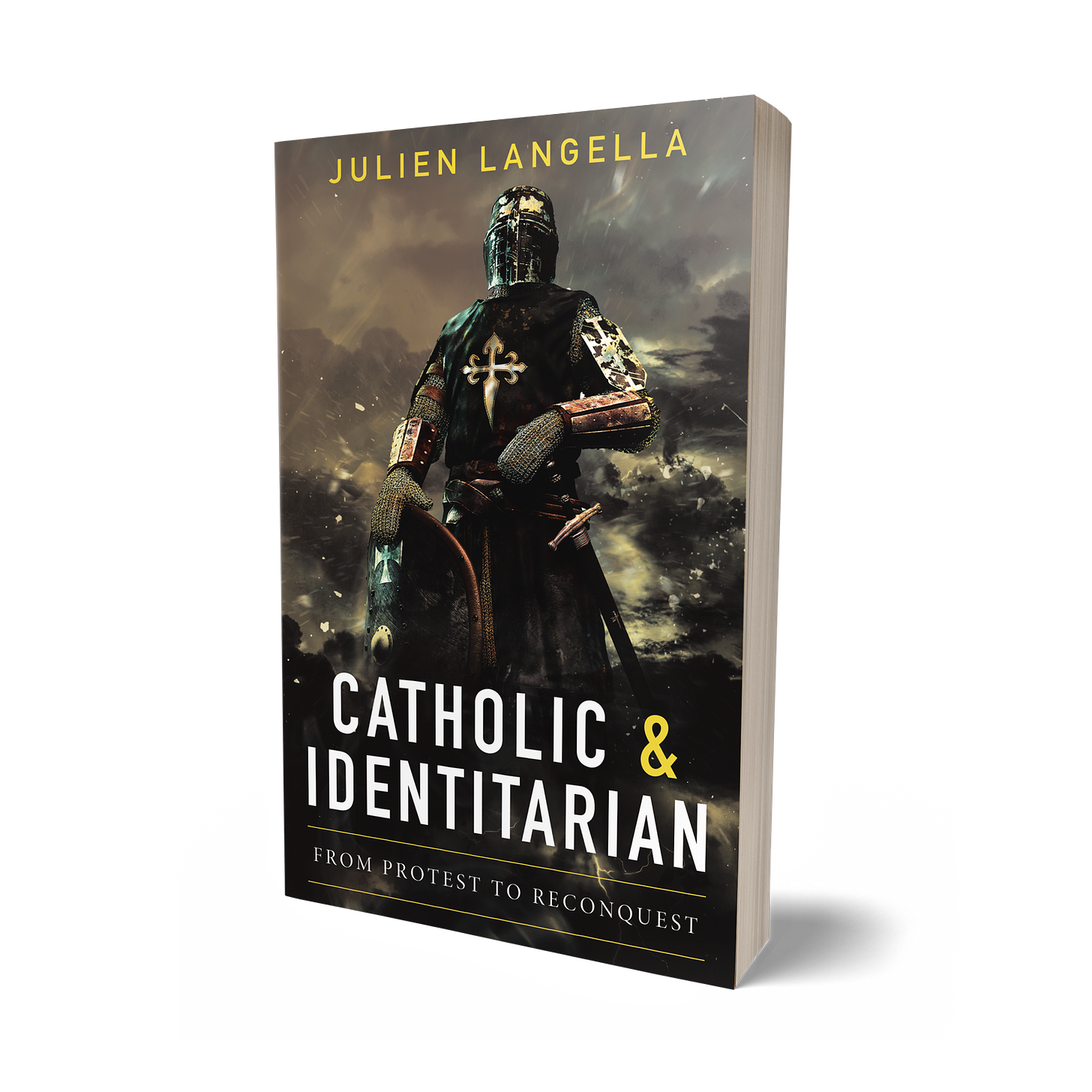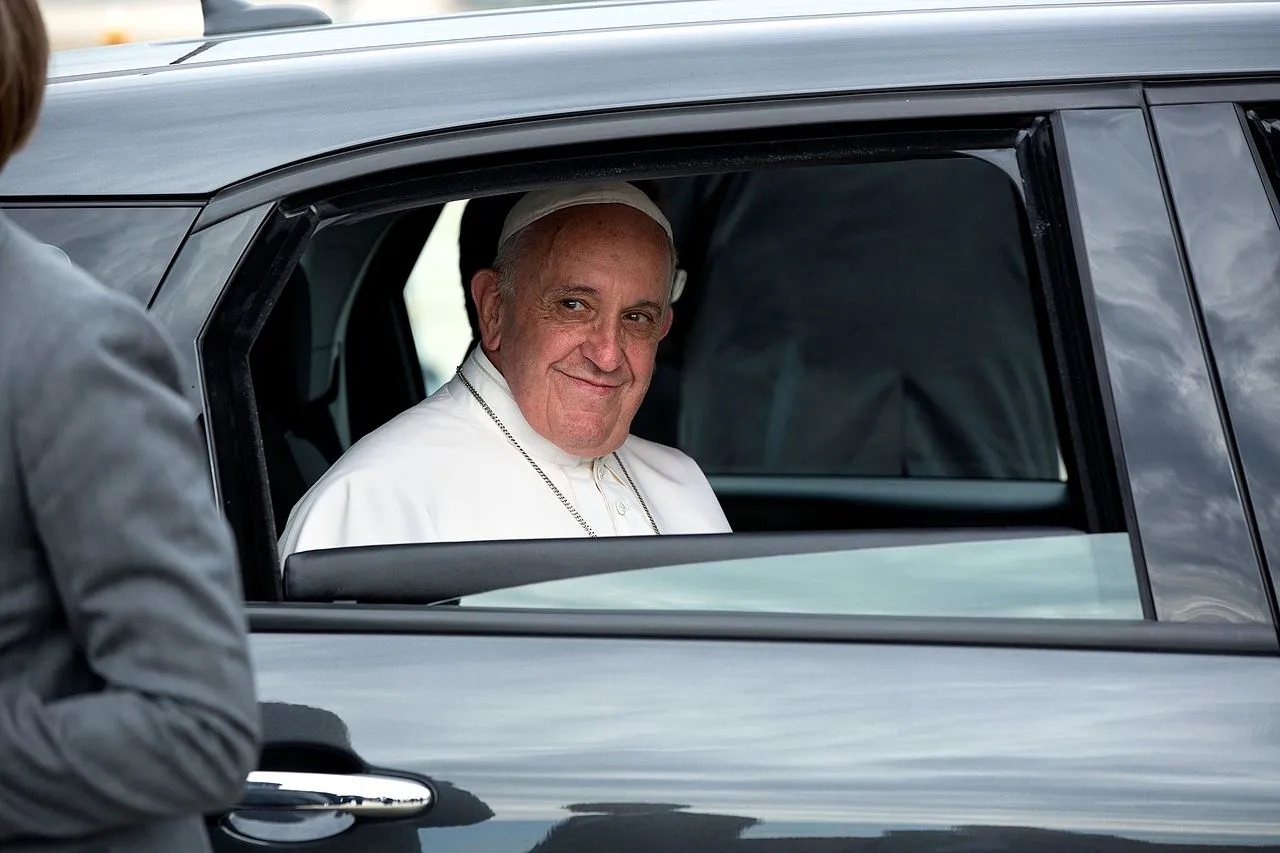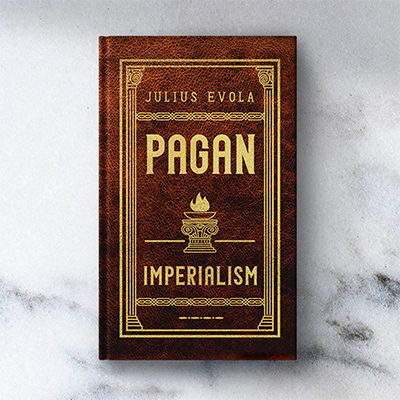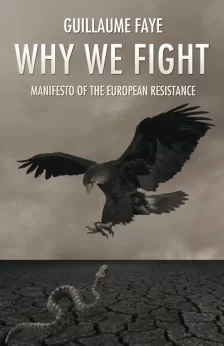“Each has his appointed day.”
— Virgil, Aeneid, X, 467
At 7:35 AM on April 21 — on the feast of the Nativity of Rome and, in the liturgical calendar of the Year of Our Lord 2025, Easter Monday — Pope Francis died. The Petrine See is now officially vacant, and a veil of silence falls upon Jorge Mario Bergoglio, just one day after his final public appearance.
In the following lines, we will not indulge in vulgar dances upon still-warm remains, nor in idle gossip, nor in equally fruitless invective directed ad hominem at one who has now departed this world. Such conduct is unworthy of the style of the author, and unbecoming of that Idea which — though denied by flocks of vultures and jackals who make a living desecrating the dead — proudly affirms its heterogeneity against the baseness of the age. And yet, if — as Mishima teaches us — “to justify oneself is an act of cowardice,” then to justify a man — more than that, a Pope, the holder of one of the most burdened and influential offices on this earth — merely because his heart has stopped beating, keeping tactful silence on who he was or, worse still, feigning posthumous admiration simply to gain some respectability in the eyes of the herd, would be even more despicable and unjust.
Pope Francis, in truth, was an enemy of Europe — a frank judgment, devoid of animus but rich in honesty. He was an enemy, yes — not as inimicus, a personal adversary in the fleeting drama of human affairs, but as hostis: a spiritual, essential, existential adversary. From the day of his ascent to the Supreme Pontificate on March 13, 2013, by the will of the College of Cardinals, the former Archbishop of Buenos Aires never once concealed his feelings — and in this, one must concede, he was at least sincere. He, the Pope “from the end of the world,” despised Europe — geographically, spiritually, and in terms of identity. He saw in Europe — as prescribed by the tenets of Liberation Theology, which long sought in Latin America to fuse Christ with Marx and class struggle with ethnic antagonism — the epicenter of capitalism and colonialism, a primal guilt that could be expiated only by Europe’s self-negation and by her transformation into a no-man’s-land for the dispossessed of every continent.
As Pontiff, he endeavored to uproot from the Church the last symbolic traces of that solar evolution of Christianity which, culminating in the Middle Ages — in the spires of Chartres, in the martial fervor of the Crusaders and the Holy League, in Imperial Europe with its abbeys, courts, and cathedrals — was gradually extinguished by the Reformation and Counter-Reformation, and ultimately by the Second Vatican Council. Consistory after consistory, his appointments to the cardinalate drew from the “far-flung peripheries of the world,” elevating swarms of perfect unknowns from obscure, irrelevant African or Asian dioceses, whose only decisive merit was their non-European — or more accurately, anti-European — identity.
In stark contrast to the traditional missionary spirit of historic Catholicism, which once sought to export the character and intellect of European Christendom to the remotest regions of the earth, Bergoglio’s ecclesial and political approach cast Europe as the great enemy to be erased — retribution for an infinite catalogue of historical wrongs, real or imagined.
Even more so, he was — unsurprisingly — not only an enemy of Europe but of Rome: of eternal Rome and her innate, sacred verticality, to which, for two millennia now, Catholicism has been inextricably bound. From the very beginning — starting with his rejection (thinly disguised as humble modesty) of the papal apartment, and of the much-maligned red shoes, and from his choice of a name never before used, signaling his break with regal inheritance — Francis flaunted his “difference,” his horizontality, his banality. To the world, he was no longer the Supreme Pontiff, but “just” the Pope — or better, a papà, an ordinary man in white, an uncle or grandfather saying good evening and kissing the hands of foreign guests, shattering conventions, priding himself on “smelling like the sheep,” riding in a Fiat for the cameras, and speaking at the United Nations General Assembly.
His entire pontificate was a steady extinguishing of the sacred flame, and while this extinguishing was the very reason for the flood of praises he received in life and in death, to point it out is no violation of pietas.
Indeed, having now established who Bergoglio was, we must also underscore who he was not. Bergoglio was not the wicked, crazed, even “Antichrist-like” caricature that many of his more or less conservative critics made him out to be in their endless conspiracy theories. He was not, in truth, the product of some occult conspiracy. Quite the opposite: the consistency with which he carried out his positions, the candid, sometimes awkward but always clear manner with which he explained what he was doing and why — these reflect a good faith we do not doubt.
Rather, Bergoglio’s pontificate marked the terminal stage of a motus in fine velocior — that natural quickening every crisis undergoes before its final rupture. Without a doubt, Bergoglio was the logical conclusion to an ancient conflict within the Catholic Church, a conflict driven by both internal and external forces — not to strike Catholicism as a religion per se but to dismantle the verticality and transcendence the Church once visibly embodied through her hierarchy, dogma, saints, rituals, and sacred tongue.
This antagonistic process found its decisive phases not in Francis himself but in the Second Vatican Council and its radical shifts in outlook; in Paul VI’s Novus Ordo Missae, which stripped the Mass of vertical tension and rendered it a mere “assembly of the faithful”; in the syncretic spectacle of Assisi under John Paul II; in the “partial” and ambiguous abdication of Benedict XVI, who chiseled away the last glimmer of eternity from the Papacy, transforming it into an earthly office akin to a presidency or prime ministership. In this light, it is the opinion of this writer that Francis bears far less guilt than many of his recent predecessors.
In any case, the Pope is dead. And in a few weeks, another will ascend the same throne. The twelve years of Francis, following the drift of previous decades, marked a crossing of the Rubicon — beyond which, return seems unlikely. Therefore, one can only hope that the next Pope — or his immediate successor — will be a man of total rupture: whether with Catholicism tout court or with the “religion of the Council,” to borrow the phrase of Archbishop Marcel Lefebvre, time alone will reveal. What is certain is that the crisis of the Catholic Church has reached an unmissable turning point. The collapse of vocations, the stream of shameful scandals, doctrinal and pastoral chaos, the flaunted irreligiosity at all levels of the hierarchy, and the constant begging for approval from her enemies — all have fatally eroded her credibility.
The sweeping reforms that have engulfed the Church have rendered her little more than a metapolitical vehicle adrift in the current of international progressivism — a fact especially evident in small-town Europe, where parishes often function as de facto subversive cells. The Church is now just another bloated NGO — albeit a rich one — in an age overflowing with other, far more attractive and better-organized NGOs. As it stands, the Catholic Church would not survive even the gentlest administrator in a white cassock winding down a bankrupt enterprise. And if her final day were to come, it would be — rightly — a suicide, not a murder.
But the equation is not that simple. Alongside the moribund leviathan of the official Church lives an entire galaxy of men and women, religious orders, associations, and fraternities worthy of attention. This galaxy is multifaceted, polyphonic, diverse, and at times inconsistent and contradictory. It yearns — undoubtedly — for authoritative and unifying direction. But it endures. And it is not going away.
The author recently attended a solemn Sunday Tridentine Mass at the magnificent church of Saint-Nicolas-du-Chardonnet, located on Rue des Bernardins in Paris’ charming Fifth Arrondissement. Saint-Nicolas has a story worth recounting. In 1977, a determined band of traditionalist faithful, led by the priest François Ducaud-Bourget, expelled the parish priest by force and occupied the building. Since then, aided by a security service of identitarian activists, the Priestly Fraternity of St. Pius X — founded by the aforementioned Archbishop Lefebvre — has maintained control of Saint-Nicolas, turning it into a bastion, a steadfast vanguard in the face of ecclesial disintegration. On that mild April Sunday, I was surrounded by some seven hundred worshipers, deeply immersed in prayer, almost entirely ethnically homogeneous, many of them young — young modern French, but radiant with a pride of bygone days — and countless children.
Alas, this is not always the case. While French-speaking traditionalist Catholicism, firmly linked to the identitarian world and nourished by the immortal legacy of the Vendée — of “villages, altars, and tombs,” of “scythes from the thicket” — seems to thrive, the same cannot be said elsewhere, including in Italy. The famous line from Shakespeare’s Henry V, “we few, we happy few,” was meant as a fiery exhortation to recover a warrior spirit — a solar one — and to flood the heart with valor as it rushes the foe. But within many segments of the “eternal Catholicism” crowd, it seems to have been misread as “we few, we comfortably few,” nestled amid pre-Risorgimento revanchisms, scattered reenactments, and sterile purisms.
Most harmful, perhaps, is the peculiar temperament one might call “Guareschismo”1 — a stubborn, crippling insistence on retreating into a quaint little world of yesteryear, a cozy temporal and cultural refuge where the petty-bourgeois myth of the “good reactionary” can remain safely preserved, and where musty moralism becomes the only expression of spirits resigned to being proudly irrelevant to history.
Without wishing to generalize, one conclusion imposes itself irresistibly: this is a fateful hour. To miss it would be unthinkable. The time is ripe for a Catholic rebirth that just a few years ago would have seemed impossible. But fate — or Providence — casting its line is not enough. First of all, courage is needed. Will. Audacity. Vitalism. What is needed is a revival of a Catholic vision no longer in tacit or overt conflict with the European spirit that once made the Church great — by inserting it into a perennial tradition that predated it and that it rejuvenated — but rather in full harmony with it. And this must happen now.
A Catholicism both new and ancient, youthful and ardent, one that treasures the legacy entrusted by its ancestors but keeps its gaze fixed firmly on the challenges of the future — this Catholicism can become a resounding and decisive voice in the collapse of the present, casting light and hope into the dullness of the century to which fate has assigned us.
A few years ago, an eloquently titled book was published in Italy by Passaggio al Bosco: Catholic & Identitarian.2 Its author, Julien Langella, is a leader of Academia Christiana, one of the most brilliant initiatives to emerge from the traditionalist Catholic movement in Europe — a model of militancy, constructive modernity, and disruptive strength. There is no shortage of examples. What remains is to understand them — and follow them.
Dominique Venner, a pagan and great European, whose sacrifice at Notre-Dame — far from being blasphemous — this Catholic author has no trouble calling one of the most luminous, selfless, and prophetic acts our Heimat has witnessed in recent memory, traced the path for all of us:
I belong to the land of trees and forests, of oaks and wild boars, of vineyards and sloped rooftops, of epics and fairy tales, of the winter Solstice and the feast of Saint John in summer. It is a response to those who claim that Europe does not know what it is. (…)
The sanctuary where I retreat is the deep and mysterious forest of my origins.
My sacred book is the Iliad, as well as the Odyssey, founding poems and revelations of the European soul. (…)
Besides, I do not strike out the Christian centuries. The cathedral of Chartres is part of my universe just as much as Stonehenge or the Parthenon.
This is the inheritance that must be assumed.
The history of the Europeans is not simple. It is punctuated by ruptures, beyond which we can rediscover our memory and the continuity of our primordial Tradition.
Before the conclave begins and voting commences, the Master of Ceremonies addresses those gathered in the Sistine Chapel with two terse but loaded words: extra omnes — everyone out. At that moment, silence falls, and beneath Michelangelo’s Last Judgment, the cardinals are alone — alone before History that watches them.
Well, we too, European Catholics, are being watched by History. And the silence within us, far from being one of surrender, can — and must — become fertile and life-giving. We have the real chance of an epochal Reconquest, one that leads us to plant new banners where tired, outdated words prepare to yield to imperatives that will not be denied.
May the eternal Tradition Venner spoke of, at the end of this night, be rediscovered — loved to the death, made into our very life — by us, in the light of the risen and victorious Christ, if we are Catholic, and in any case, of a millennia-old and flourishing Europe, whose evergreen roots nourish our spirit, our body, and our mind.
Extra omnes, then — and may a new Sun, within and above us, finally rise and shine.
Purchase Julian Langella’s Catholic & Identitarian here.

Footnotes
“Guareschism” refers to the nostalgic and moralistic worldview associated with Giovannino Guareschi (1908-1968), an Italian journalist and satirist best known for his Don Camillo stories. Set in postwar rural Italy, the series portrays the humorous and often sentimental clashes between Don Camillo, a traditionalist Catholic parish priest, and Peppone, the local Communist mayor. While rich in irony and good-natured critique, the stories came to symbolize a cozy, apolitical conservatism — a retreat into a romanticized, small-town world where ideological conflict is softened by personal familiarity. In this context, “Guareschism” denotes a timid and anachronistic attitude that evades historical struggle by taking refuge in a safe, petit-bourgeois past.
The English translation was published by Arktos in 2020 and is available on Amazon.






